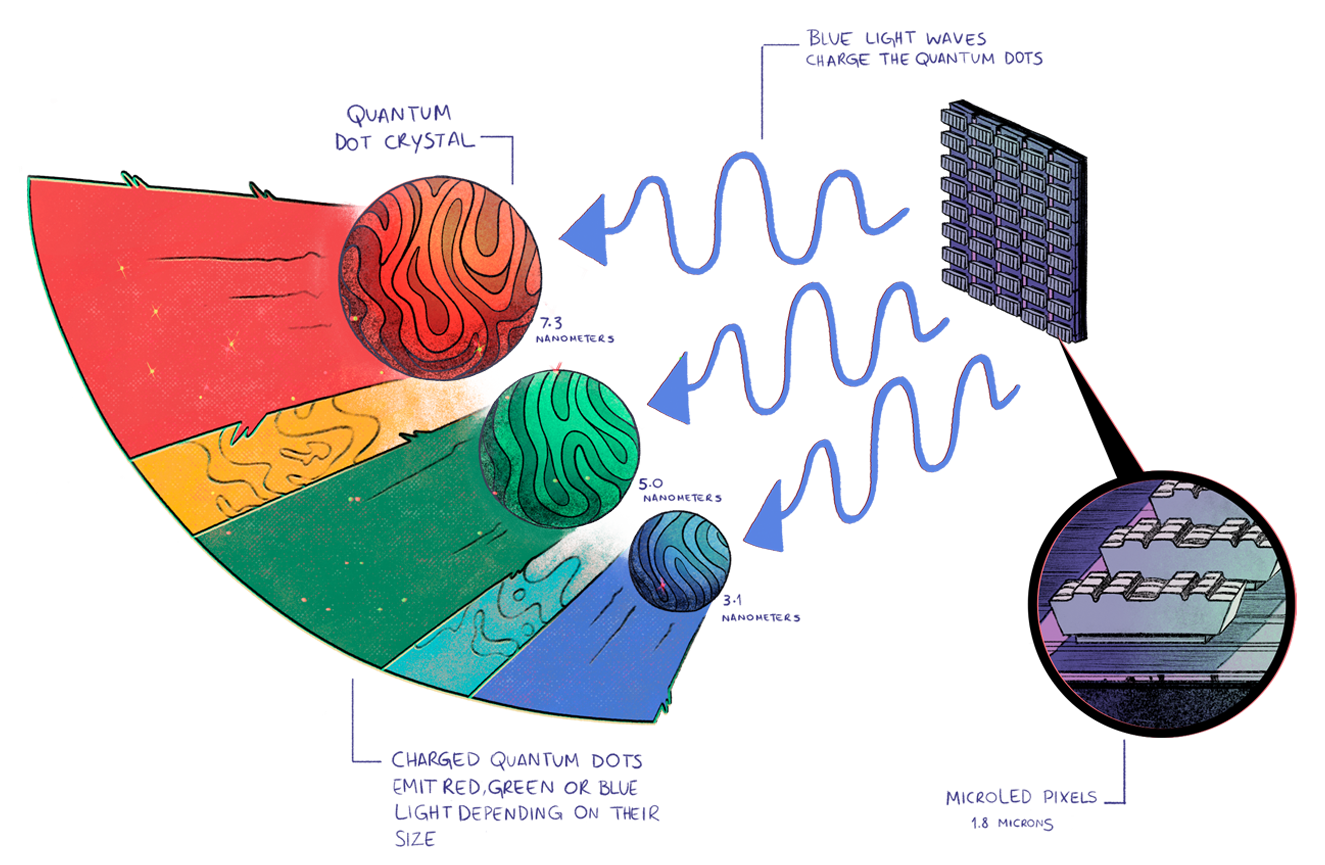Forget OLED — NanoLED TVs could arrive next year
NanoLED could soon go head-to-head with the best OLED TVs

The best TVs are constantly being improved with new display technology — and one of the most impactful new display technologies is probably the quantum dot filter. It reproduces colors more accurately from more viewing angles and can be added to traditional LED-LCD TVs as well as the best OLED TVs.
But there’s a more advanced version of this quantum dot technology called NanoLED. It takes these quantum dots and removes the filter from the equation, instead, the quantum dots are directly electrified by the TV.
It sounds like a far-off technology but, according to a new report, NanoLED TVs sooner than expected: Nanosys, the company behind quantum dot technology was recently acquired by Japanese company Shoei Chemical (h/t FlatpanelsHD). Prior to this acquisition, Nanosys had been targeting a release window of 2025/2026 for the first NanoLED TVs, but following the acquisition, VP Marketing for Nanosys Jeff Yurek said that “Shoei is committed to the future of quantum dot technology and we’re excited to accelerate progress in NanoLEDs as a part of Shoei.”
That hopefully puts the release window at some time in 2024 or 2025.
How NanoLED works and how it is different from quantum dot filters
If you’ve seen the terms QLED, QNED, Quantum, miniLED or QD-OLED when shopping for a TV, these terms refer to TVs using a quantum dot filter. This is currently the extent of quantum dot technology in mainstream displays.
The way it works is that light is emitted from a blue-light LED backlight or, in the case of QD-OLED TVs, red, green or blue (or sometimes white) OLED subpixels. This light is then passed through a display layer of quantum dots that then reproduce the color based on the width of the dot.
According to Nanosys, a quantum dot that is seven nanometers wide converts light into red, a five-nanometer dot converts light into green and a dot that is three nanometers in width converts the light into a blue light. This process is known as photo luminescence because it needs a photon of light from the LED or OLED to stimulate the quantum dot.
Get instant access to breaking news, the hottest reviews, great deals and helpful tips.
But NanoLED eliminates the need for the initial photon of light altogether. Instead, quantum dots are directly stimulated by electricity in a process called electro luminescence. Theoretically, this should have some benefits. The biggest one is an improvement in peak brightness — Nanosys says that NanoLED can achieve over 600,000 nits peak brightness, though my assessment is that mainstream NanoLED TVs would likely fall short of this number.

But NanoLED could also cut costs for display manufacturers hoping to achieve high levels of peak brightness. Right now, microLED is one of the leading technologies focused on this problem, and Nanosys is working on quantum dot filters for microLED displays — but it’s currently prohibitively expensive to manufacture a microLED display for TVs. The cheapest microLED TVs cost nearly $100,000, and a big reason is that even one mistake assembling the microLEDs in a microLED display can render it useless, greatly reducing yield.
Nanosys’ workaround for this issue is using a solution-based process, similar to what is being tried with inkjet TV displays. It says that this should result in a manufacturing process that is less expensive and less susceptible to diminished yield. It also says that this process should allow any surface to be transformed into a NanoLED display, something that is currently a major selling point for naturally flexible OLEDs.
To be clear, this technology is still years away — any release window is a projection at this stage — but if Nanosys is successful, it could take your TV display a massive leap forward.
More from Tom's Guide
- Google TV just got a major upgrade for gamers — and it’s coming to Chromecast
- PHOLED could give your next OLED TV a boost — and it’s coming next year
- Plasmonic PHOLED is the next big thing in OLED TVs — what you need to know

Malcolm has been with Tom's Guide since 2022, and has been covering the latest in streaming shows and movies since 2023. He's not one to shy away from a hot take, including that "John Wick" is one of the four greatest films ever made.
